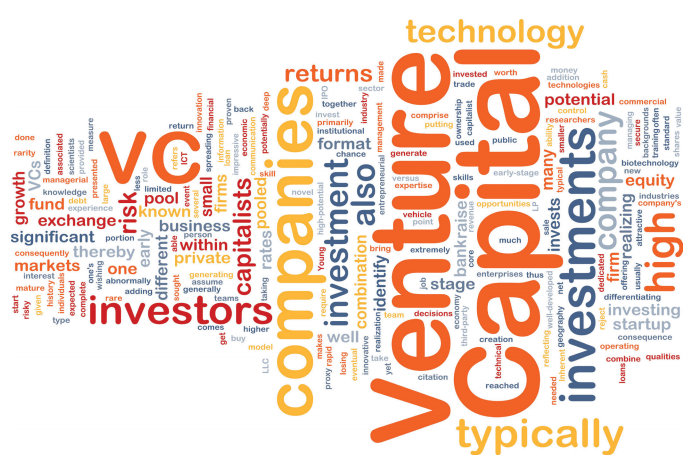
Policy-makers worldwide are paying increasing attention to the potential for engineering greater innovation through venture capital and entrepreneurial finance. In some cases, leaders have been motivated by a desire to jump-start sluggish growth. In others, they are seeking to transform natural-resource-dependent economies into ones where 21st century industries play an important role. Both these motivations have been at work in Canada, where the federal government recently decided to allocate $400 million in venture funds, alongside numerous provincial and local efforts.
The reasoning behind such efforts is clear. A single dollar of venture capital, one study suggests, is as effective at boosting new ideas as three dollars of corporate investment in R&D. If we listened to the venture capital trade evangelists worldwide, we might conclude that to get more innovation, all we need is more venture capital.
But those who claim that venture capital is a driver of true innovation, or even of positive financial returns to investors, face some hard questions. With the venture capital industry facing a hangover from its recent flurry of social media investing and the disappointing stock market performance of firms such as Groupon, Zynga and Facebook, the skeptics have been rarely been as loud as they are today.
Several essential constraints limit venture capitalists’ ability to promote true innovation. The first is that venture investors are financing a progressively narrower range of technologies. Recently, a few hot areas — most notably the Web and social media — have dominated an increasingly large share of the venture landscape. But while another smartphone app to identify the drinking establishment where your buddies are currently carousing may benefit fraternity and sorority members, it is hard to feel that such ventures address fundamental challenges facing humankind today. Investor Peter Thiel has aptly expressed the core anxiety: “We wanted flying cars. Instead, we got 140 characters.”
Historical data bear out the trend. In 1974, the fraction of venture capital investments primarily involving computers and telecommunications was only 35 percent, and this share climbed to 62 percent in 1982 (as excitement grew around computer peripherals) and finally reached 79 percent during the dot-com boom in 2000, before subsiding temporarily. The figure has rapidly climbed again, reaching 56 percent in 2011. And that may yet mask the rise of social media investing, which fits poorly into traditional classification schemes. Even within other categories, venture funding is highly concentrated. In the energy sector, venture funds have overwhelmingly gone to renewable and “smart grid” technologies, rather than those related to conventional power generation.
What explains this dramatic concentration? One answer is that in categories where the innovation cycle is short, such as media and software, venture funds have seen much better returns than in areas like advanced materials and biotechnology, where the time frame for success is longer than the 8-to-10-year life of the typical fund.
Estimates assembled by the consulting firm Sand Hill Econometrics, which measured the relative performance of all venture investments, show that a dollar invested in 1991 in venture-backed software firms would have turned into more than $23 by the end of 2011 (before the venture funds took their fees and cut of the proceeds), for an annual return of close to 19 percent. By comparison, venture investments in health care and retail had an annual return of 10 percent over this period (again, before the fees), while a similar investment in the bedraggled “other” category — which includes energy, transportation and many other areas — returned only 6 percent. Once the venture capitalists’ annual fees (which typically run about 2 percent of the capital under management) and profit share (20 percent or more of the capital gains) are factored in, the performance difference would be even bigger.
This seeming limitation of the venture capitalists’ “pixie dust” creates a self-reinforcing dynamic. Groups specializing in computers and telecommunications have had superior returns, which have allowed them to garner more money. Others struggle, disappear or reinvent themselves as mainstream investors in popular categories.
A second critical limitation is that the venture market is extraordinarily uneven, moving from feast to famine and back again. Consider the tremendous surge in funding for biofuels, peaking in 2006, and again in social media companies during the last two years. During booms, unjustified exuberance rules, a common phenomenon known as “money chasing deals.” As more money flows into funds from institutional and individual investors, venture capitalists are willing to invest in ever riskier deals (and often on worse terms). The share of first-round venture dollars going to seed-stage companies — those whose prospects are least certain — has varied from a low of 24 percent in 1995 to a high of 58 percent in 2000-01. Today that percentage has climbed again, reaching 61 percent in 2011. Moreover, this risk-taking is not rewarded: returns in boom years such as 2000 are among the lowest seen in any period.
Cycles in the venture industry stem largely from the behaviour of funds themselves. During hot markets, inexperienced groups raise capital, often from unseasoned investors who are attracted by the excitement, not appreciating that first-time funds often show weaker performance, particularly in hot markets.
Name-brand groups, too, often take advantage of exuberant markets to raise money aggressively, perhaps because partners’ compensation is driven by fees on capital under management. As venture groups grow, they increase the capital that each partner is responsible for and broaden the range of industries in which each invests. What starts as a trickle ends as a torrent. Ultimately the expansion proves unsustainable as investment returns fall. Then the cycle repeats itself all over again.
Government policies can amplify these cycles as well. The experience of the Canadian Labour Fund Program in the 1990s provides a good illustration of this danger. A number of provincial governments, seeking to encourage venture capital, established tax credits for these funds in the 1980s and 1990s. The amount of capital investors put into labour funds grew spectacularly in response to these investments: the venture investment pool climbed from $800 million in 1992 to $7.2 billion in 2001.
But the funds that were established and the capital raised were far from inspiring. Multiple analyses suggest that the bulk of the funds raised were invested by inexperienced groups in a problematic manner. In many instances, these uninformed investors were willing to commit capital at huge valuations. Many of these groups, not affiliated with the program, were convinced that they could not generate profitable returns in the Canadian market, and shifted (at least temporarily) to investing in the United States. Thus not only did this program lead to an unsustainably large amount of investment, but it actually drove away the most knowledgeable investors.
Venture capital moves from feast to famine and back again.
Whatever the precise mechanisms behind it, the boom-and-bust cycle can negatively impact the flow of innovation, at least in the short run. For instance, during the deep venture trough of the 1970s — no venture capital funds at all were raised in the United States in 1975 — many companies that sought to pioneer personal computing languished unfunded. Ultimately, these technologies surfaced with a revolutionary impact in the 1980s (with the help of venture investors), but their emergence might have been accelerated had the venture market not been in such a deep funk. It is hard not to feel that many long-term, expensive investment areas, such as clean tech, manufacturing and biotech, are in exactly such a trough today. While venture capital may be part of the innovation solution, it is not a panacea.
The overfunding of start-up firms during booms carries its own negatives. Examples include the frenzy surrounding the Internet companies B2B and B2C in the late 1990s. The result is waste. Multiple companies pursue the same opportunity, each company often more marginal than the last. The initial market leader’s staff is poached by the me-too followers, disrupting the progress of the firm with the best chance of success. Moreover, once the overfunding subsides, the firms that still survive struggle to attract funding in an atmosphere that is now often poisonous.
So when do booms turn to busts? Venture capitalists depend critically on acquisitions and the public stock markets to help them exit their investments and return capital to their investors. But the public markets are fickle. During the past decade, soaring enthusiasm — for clean tech in 2006-07 and social media in 2010-12 — each time abruptly subsided, leaving the portfolios of venture capitalists and stock investors in shambles.
Yet, ironically, busts may promote innovation precisely because they frustrate venture capitalists’ efforts to exit their investments. A myriad of accounts and studies have suggested that public listing may act as a powerful deterrent to innovation. In recent years, firms such as Pfizer and Yahoo have slashed their R&D budgets in hopes of pleasing stock investors. More generally, the latest academic research suggests, venture-backed companies that consider going public but abandon the efforts in the face of unfavourable market conditions are actually more innovative. Senior partners at an established venture firm are likely to have a pretty sanguine view of their own (and their partners’) ability to affect positive change in the firms they fund and in society at large. This is understandable: one is unlikely to be successful at committing skittish institutions’ money to nascent startups without a considerable degree of self-confidence.
All of this suggests that policymakers should not see venture capital as a cure-all for more and better innovation. The boom-and-bust cycle, the mercurial effects of public markets and the narrowing of venture capital’s objectives are all shortcomings when it comes to using it as a policy tool. Seeding start-ups is an important element of a modern economy and venture funding may be a way to address other, legitimate Canadian policy objectives, whether keeping talent in Canada or building small businesses. But those responsible for the new Canadian venture capital policy should recognize the record of its limited impact in addressing the broader needs for innovation.
Photo: Shutterstock by Rei Imagine








